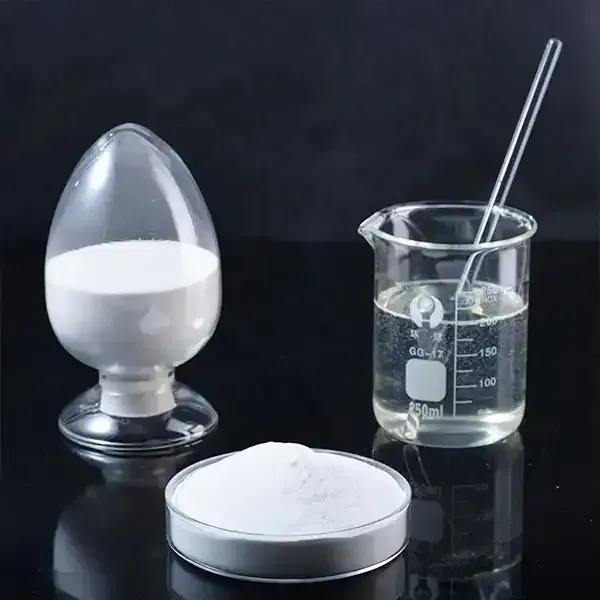Hydroxyethyl Cellulose Properties, Applications, and Benefits
Hydroxyethyl cellulose (HEC) is a water-soluble polymer derived from cellulose, a natural polymer found in the cell walls of plants. As a derivative of cellulose, HEC retains many of the desirable properties of its parent compound while introducing unique functionality that enhances its applicability across various industries. This article delves into the properties, applications, and benefits of hydroxyethyl cellulose.
Properties of Hydroxyethyl Cellulose
HEC is primarily characterized by its excellent water solubility, viscosity, and film-forming abilities. When dissolved in water, it forms a clear solution, which can be tailor-made to produce solutions of varying viscosity levels depending on the concentration of HEC used. The viscosity of HEC solutions is influenced not only by the concentration but also by temperature and pH, allowing for a wide range of manipulation to meet specific requirements in formulations.
One of the standout features of HEC is its non-ionic nature, making it less susceptible to changes in ionic strength compared to other cellulose derivatives. This non-ionic property makes HEC an ideal candidate for use in various applications that require stability in diverse environments. Additionally, HEC is biodegradable, non-toxic, and environmentally friendly, aligning with the growing emphasis on sustainability in product development.
Applications of Hydroxyethyl Cellulose
The versatility of hydroxyethyl cellulose leads to its widespread use across multiple industries
1. Pharmaceuticals In the pharmaceutical sector, HEC is utilized as an excipient in drug formulations. Its ability to improve the flow characteristics of powders and enhance the stability of active ingredients makes it invaluable. HEC is also used in controlled-release formulations, where it helps regulate the release of the drug over time.
2. Cosmetics and Personal Care The cosmetic industry employs HEC as a thickening agent and film-forming agent. It enhances the texture and stability of various products such as lotions, creams, and gels. Additionally, HEC provides a smooth application feel and helps improve the overall performance of cosmetic formulations.
hydroxyethyl cellulose

3. Construction In construction materials, HEC serves as a key component in formulations for tile adhesives, dry mix mortars, and plaster. It improves workability, enhances adhesion, and prolongs the open time of the products, making it easier to work with and yielding better results.
4. Food Industry HEC finds application in the food sector as a thickening agent, stabilizer, and emulsifier in various food products, including sauces, dressings, and dairy products. Its ability to form gels and impart desirable textures to food products makes it a valuable ingredient.
5. Household Products HEC is also commonly used in household cleaning products as a thickener, providing a desirable viscosity that enhances product usability and effectiveness.
Benefits of Hydroxyethyl Cellulose
The use of hydroxyethyl cellulose comes with numerous benefits. Its biocompatibility allows for safe applications in sensitive environments such as pharmaceuticals and personal care products. The ability to tailor its viscosity through concentration adjustments enables formulators to customize products to meet specific user needs.
Moreover, HEC’s excellent stability at varying temperatures and pH levels contributes to the longevity and reliability of formulations. In construction, its use leads to improved product performance, contributing to the durability of structures.
From an ecological perspective, the biodegradable nature of HEC positions it as a sustainable alternative to synthetic polymers, which aligns with current trends focused on reducing environmental footprints.
Conclusion
Hydroxyethyl cellulose is a multi-faceted polymer with a broad array of applications across numerous industries, including pharmaceuticals, cosmetics, construction, food, and household products. Its desirable properties, such as water solubility, viscosity modulation, and biocompatibility, make it an invaluable ingredient for formulators looking to enhance product performance while adhering to sustainability goals. As industries continue to seek innovative solutions, the role of hydroxyethyl cellulose is likely to expand, underscoring its importance in modern formulations.
-
The Application and Significance of Construction RdpNewsMay.19,2025
-
Industrial Grade HpmcNewsMay.19,2025
-
Building Coating Adhesive Building Coating Adhesive HpmcNewsMay.19,2025
-
Application Of Hpmc For Detergent For Detergent In DetergentsNewsMay.19,2025
-
Application Of Hpmc Cellulose In Cement-Based MaterialsNewsMay.19,2025
-
Application Of High Quality Hpmc For Construction In The Field Of ConstructionNewsMay.19,2025




